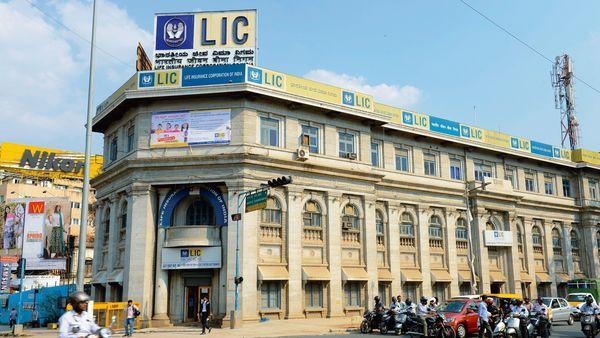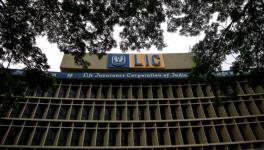Disinvestment of LIC to Affect Policyholders?

Image Courtesy: Livemint
Finance Minister Nirmala Sitharaman’s announcement during the presentation of Budget 2020-21 proposing sale of a part of its holdings in Life Insurance Corporation (LIC) has invited much criticism from the employees’ unions within the public sector undertaking (PSU) and the civil society. So far, the government’s proposal stands at the sale of 10% of its holding through an initial public offering (IPO) to mobilise Rs 90,000 crore, to attain the aggressive disinvestment target of Rs 2.1 lakh crore during the fiscal year 2020-21.
The largest insurance company in the country, LIC, which has assets worth Rs 31 lakh crore, was established in 1956 through the Life Insurance Corporation Act of 1956. According to the Act, each policy is guaranteed by the government. So, what would happen to this sovereign guarantee if the LIC is being disinvested?
Though the LIC chairman MR Kumar said that the finance minister had assured continuation of its sovereign guarantee to the policy holders, reports say that the Finance Ministry is in talks with the Law Ministry to amend the LIC Act. Section 37 of LIC Act, however, ensures sovereign guarantee to all the policy holders.
“There is no implication for policyholders. The Finance Minister has clarified that sovereign guarantee will continue. That being the case I don’t think there is anything to worry for the customer,” Kumar had said.
At present, LIC pays 5% of its surplus to the shareholder – the government and the rest goes to the policyholders. While in the case of private insurance companies, 10% goes to the shareholder and rest goes to policy holders. This is how LIC could give higher bonus on policies compared to the private insurance companies. Through 10% disinvestment, there will be more shareholders except the government and it would affect this payout structure, say analysts and experts.
Also read: 'Won't Allow Govt to Loot LIC, a National Asset'
During 2009-10, under the UPA regime, LIC had accounted for more than half of the money raised through disinvestment when the target was Rs 25,000 crore in total. Back then, the government raised Rs 9,928 crore from the disinvestment of National Mineral Development Corporation (NMDC) and of this, Rs 6,000 crore—about 60%—had come from LIC. While in the case of National Thermal Power Corporation (NTPC), where a total of Rs 8,480 crore had been raised, LIC had to invest Rs 4,263 crore.
Again, in 2012, when the government’s share of Oil and Natural Gas Corporation Limited (ONGC) had been put up for sale, LIC was compelled to purchase it. Then of the 5% share of the Centre in ONGC, LIC got 4.4% stake – almost 84% of the stakes which had been put up for sale at a cost of Rs 12,749 crore. In 2013 as well, LIC had to buy around 71% of the shares of Steel Authority of India which had been lined up for disinvestment.
Also read: Selling LIC Will Put India's Economic Autonomy in Danger
The exploitation of LIC didn’t stop with the UPA regime. The successive NDA governments have been using the leading insurance provider in a more aggressive manner. In 2014, LIC bailed out the Modi regime by buying 5.94% stakes of Bharat Heavy Electricals Limited (BHEL) spending Rs 2,685 crore. In the very next year in 2015, LIC had to spend Rs 7,000 crore to buy the stakes of Coal India Limited. The company was forced to buy the stakes to meet the Modi government’s disinvestment target of Rs 22,557 crore. During the same year, LIC had to spend around Rs 8,000 crore more to buy stakes of Indian Oil Corporation.
Again in 2017, LIC bought the shares of General Insurance Corporation of India and New India Assurance Company which was worth around Rs 8,000 crore and Rs 6,500 crore, respectively.
While in 2018, LIC spent yet another Rs 2,900 crore to buy around 70% shares of Hindustan Aeronautics limited. In the same year, LIC was made to buy one of the most debt-ridden public sector banks- IDBI bank and finally in January 2019, LIC picked up 51% stakes of IDBI bank.
In total, during the financial year of 2019-20, LIC had invested around Rs 69,000 crore in equities.
But, now, after the government’s announcement to divest LIC, the insurance behemoth has decided to unlock value in IDBI bank. Though the insurance regulator, Insurance Regulatory and Development Authority of India (IRDAI), had not fixed the timeline to reduce its stakes in IDBI to 15%—the limit allowed, the Reserve Bank of India (RBI) has given a 12-year time to do so. But, LIC chairman Kumar on February 7 said that they don’t want to wait that long.
“We would not want to wait that long, especially when we are also going to be listed, but we have to find some ways to unlock value in IDBI bank,” Kumar told reporters.
Get the latest reports & analysis with people's perspective on Protests, movements & deep analytical videos, discussions of the current affairs in your Telegram app. Subscribe to NewsClick's Telegram channel & get Real-Time updates on stories, as they get published on our website.
























